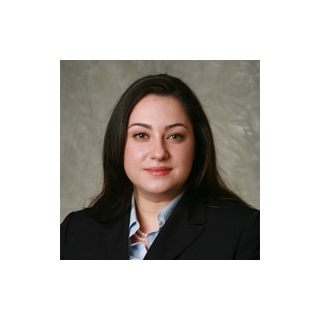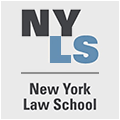
Daniela F. Henriques
Leav & Steinberg, LLPDaniela F. Henriques began her legal career at Leav & Steinberg in 2002. Motivated by her desire to make an impact as an advocate for the seriously injured, she continued to work as a paralegal at the firm while attending law school full time. She received her J.D. from New York Law School in Manhattan, where she graduated cum laude. She was the recipient of the New York State Bar Association Legal Ethics Award. Upon joining the firm as a lawyer in 2005, Ms. Henriques continued to work on all aspects of case investigation, client and witness interviews, drafting and overseeing pleadings, writing and arguing appeals and motions, plaintiffs' and defendants' examinations before trial, court appearances and trial preparation. Mrs. Henriques became the managing attorney at the firm in 2012, and partner in 2013. Mrs. Henriques has been named in Super Lawyers magazine as one of 2013, 2014 and 2015 New York Metro Rising Stars. Ms. Henriques's specialty is legal research, analysis and writing. Ms. Henriques's insights into what is necessary to support or defend a particular legal argument has made her a valued asset in both providing support to the trial attorneys and winning motions and appeals. Because of her astute abilities to research and analyze legal issues, Ms. Henriques is often asked to prepare and argue pre-trial motions concerning labor law claims, municipality and premises liability, as well as motor vehicle accident cases. Since joining Leav & Steinberg, she has prepared and argued appeals in both the Second and First Departments of the Appellate Division. Often, Ms. Henriques's ability to argue the application of a given set of facts to governing law, secures a favorable judgment, thereby eliminating the need for a liability trial. At other times, her vigorous opposition to dismissal motions, defeats a defendants' motion, thereby keeping viable defendants in the case to contribute towards a settlement for plaintiffs.
- Medical Malpractice
- Birth Injury, Medical Misdiagnosis, Pharmacy Errors, Surgical Errors
- Personal Injury
- Animal & Dog Bites, Brain Injury, Car Accidents, Construction Accidents, Motorcycle Accidents, Premises Liability, Truck Accidents, Wrongful Death
- Products Liability
- Drugs & Medical Devices, Motor Vehicle Defects, Toxic Torts
- Car Accidents
- Free Consultation
-
Contingent Fees
All personal injury cases accepted on a contingency fee basis.
- New York
-

- English: Spoken, Written
- Portuguese: Spoken, Written
- Spanish: Spoken
- Partner
- Leav & Steinberg, LLP
- Current
- Fordham University
- B.A.
-

- New York Law School
- J.D.
- Honors: cum laude; recepient of the New York State Bar Association Legal Ethics Award.
-

- New York Metro Rising Stars
- Super Lawyers
- New York Metro Rising Stars
- Super Lawyers
- New York Metro Rising Stars
- Super Lawyers
- Legal Ethics Award
- New York State Bar Association
- New York State Bar # 4381166
- Member
- Current
-

- New York State Trial Lawyers Institute
- Current
-

- Q. What does having no fault insurance mean?
- A: In New York, no-fault insurance typically pays for all medical care, lost wages, mileage reimbursement, household help, etc. for a person injured in an automobile accident, regardless of who was at fault for the accident.
For example, if you are a driver or a passenger inside a vehicle, the insurance policy that covers that vehicle will pay for the medical costs.
If you are a pedestrian struck by a vehicle, the insurance policy that covers the vehicle that struck you will pay for the medical costs.
If you are involved in an accident with a vehicle that left the scene or is uninsured at the time of the accident, and you reside within a household that has a vehicle, the insurance ... Read More
- Q. I was walking across a parking lot and was hit by a slow moving car.
- A: Yes. Under New York insurance law, a pedestrian is entitled to receive no-fault benefits from the vehicle that struck said pedestrian, up to (typically) $50,000 that would cover medical expenses, including ambulance service, hospital/emergency room service, medical providers, radiology, surgery, etc. In addition, if said pedestrian suffered a disability as a result of his/her injuries and is unable to return to normal duties at work, as part of the no-fault benefits, said pedestrian would be entitled to loss wage reimbursement from the insurance carrier. Note, typically, one can locate the identity of the insurance carrier on the police accident report (look for a 3 digit insurance code to ... Read More
- Q. What percent of a lump sum settlement do I have to pay in taxes for a personal injury lawsuit?
- A: An important issue that every client needs to address after his or her case has settled is whether or not the client owes income taxes on the settlement money he or she received at the conclusion of a personal injury case. There is no simple answer, and a close look at the specific break down of the settlement (settlement amount only for pain and suffering from injury, or does the settlement amount include monies for wages, reimbursement of past medical expenses, future medical expenses, property damage, etc.) of each client’s case must be taken to determine the answer. As the IRS notes: “A settlement payment may consist of multiple elements that have been allocated by the parties. For ... Read More

